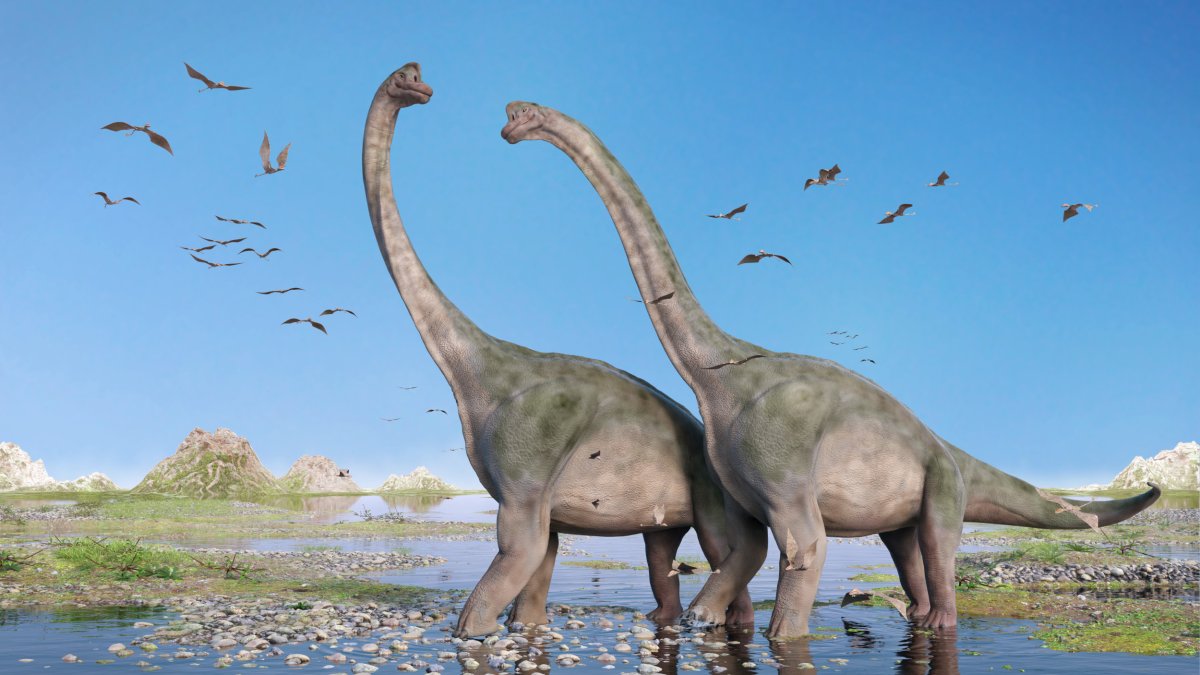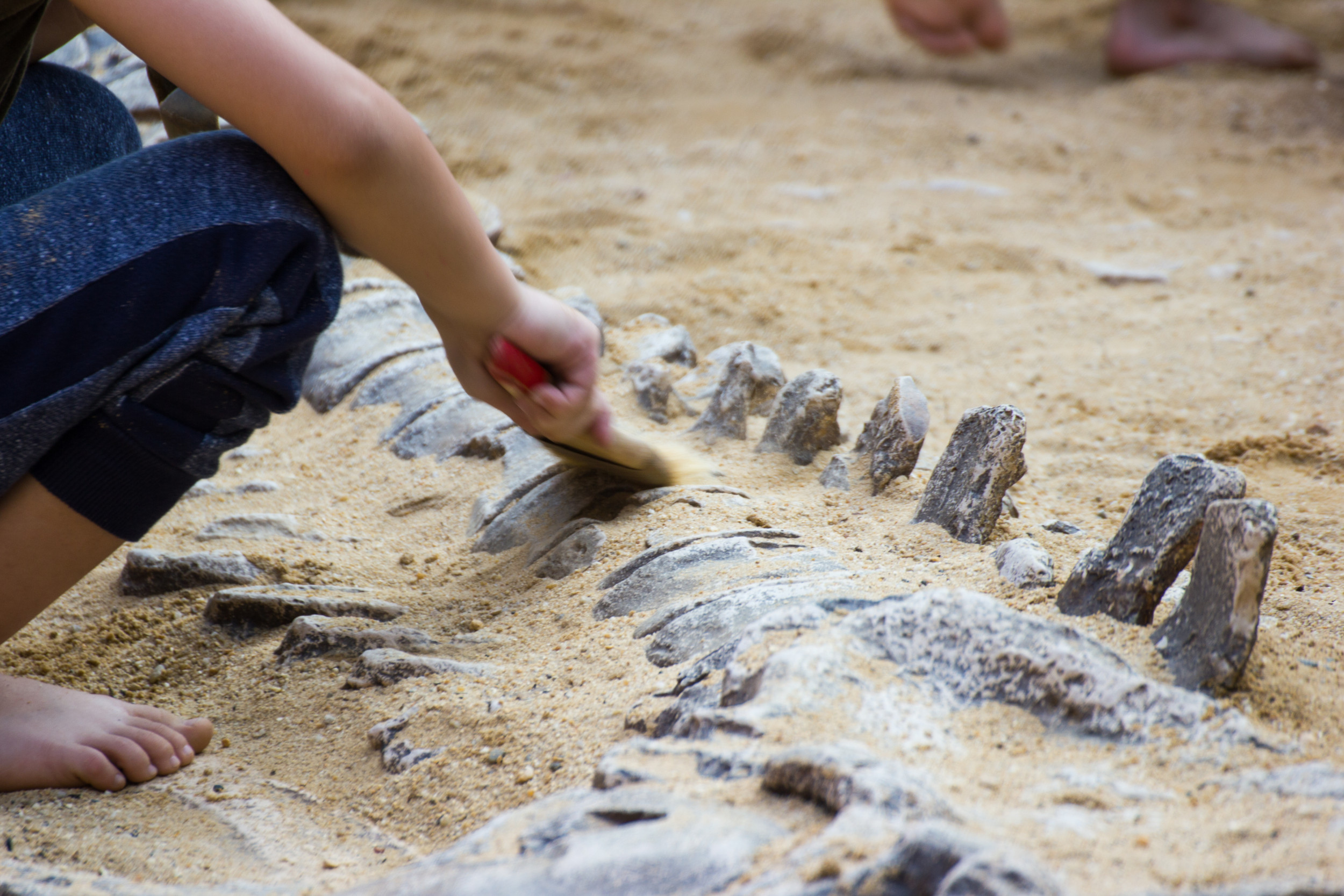A 70 million-year-old dinosaur bone found by a man walking his dog has turned out to be part of a near-complete dinosaur fossil.
The 25-year-old man, named Damien Boschetto, stumbled across the bone two years ago while walking in a forest near Montouliers, a town in Hérault, France.
After Boschetto—a paleontology enthusiast himself—reported his discovery to local researchers at the Cultural, Archaeological and Paleontological Association (ACAP) of the nearby town of Cruzy, it was found that the bone was just one part of a 30-foot-long fossilized titanosaur, which roamed the land over 70 million years ago.
ISTOCK / GETTY IMAGES PLUS
“It happened one morning like any other, during an ordinary walk,” Boschetto told local news FranceBleu in a translated quote. “While walking the dog, a landslide on the edge of the cliff exposed the bones of various skeletons.”
“They were fallen bones, therefore isolated. We realized after a few days of excavations that they were connected bones,” he said.
The fossil was eventually discovered to be around 70 percent complete, and part of the titanosaur family of dinosaurs that lived during the Cretaceous period, just a few million years before the dinosaur-killing asteroid hit and caused a mass extinction.
Titanosaurs, which include the famous brachiosaurus and diplodocus, are enormous, long-necked dinosaurs thought to be among the largest land animals to have ever existed
These herbivorous dinosaurs could reach lengths of up to 100 feet or more, with their elongated necks and tails, supported by sturdy vertebrae, allowing them to reach towering heights while grazing on vegetation.
This discovery was kept secret for two years, as the paleontologists were concerned that people would come to the site and steal or otherwise damage the bones. The titanosaur fossil was slowly extracted from the ground by volunteers at ACAP and has recently been taken to the museum in Cruzy.
“In France, in the Upper Cretaceous, it is very rare, to find this, he [Boschetto] had to have the ‘eye.’ There are some who have passed for 30 years, they have not seen this site,” the founder of the museum, Francis Fage, told FranceBleu.
“This titanosaur, which is a cousin of the brontosaurus, was around 8-9 meters (26 to 29 feet). It was heavy floods, it got stuck in a sandstone barrier, and it stayed there. We’re going to have to find the rest, the skull and the femur. There, we have the part that goes from the back of the skull in the queue.”

ISTOCK / GETTY IMAGES PLUS
Several other fossils have been discovered in the same area of France, with over 25 new species having been uncovered nearby.
“They probably all died at the same time, in a flash flood,” Boschetto told local news 20minutes in a translated quote. “We see traces of crocodile or carnivore bites.”
The newly uncovered skeleton will be studied in depth at the Cruzy museum, and eventually put on display.
“It is a flagship piece for the general public, to be able to admire a dinosaur in automatic connection like that,” Fage said.
Since the find, Boschetto has quit his job in the energy sector, and plans to obtain a master’s degree in paleontology.
Do you have a tip on a science story that Newsweek should be covering? Do you have a question about titanosaurs? Let us know via [email protected].

Uncommon Knowledge
Newsweek is committed to challenging conventional wisdom and finding connections in the search for common ground.
Newsweek is committed to challenging conventional wisdom and finding connections in the search for common ground.

Dr. Thomas Hughes is a UK-based scientist and science communicator who makes complex topics accessible to readers. His articles explore breakthroughs in various scientific disciplines, from space exploration to cutting-edge research.








